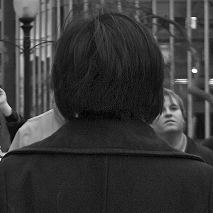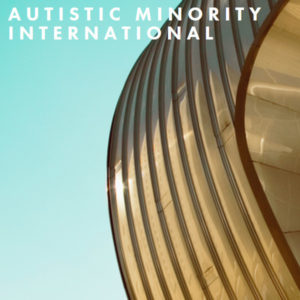↓ Links & Resources are at the Bottom of this Page ↓
Autism.
It’s something almost everyone has heard of but very few non-autistic people understand.
hint: this is just one of many reasons why autistic people really dislike autism awareness campaigns put on by greedy “charities” (besides the fearmongering, we don’t need more awareness that autism exists, we need understanding) and prefer to participate in autistic acceptance movements involving actually autisitic people, like #REDinstead.
I discovered that I’m autistic about six years ago, during a sabbatical from work at age 21. I thought I’d been having “nervous breakdowns” from being overwhelmed and just so happened across some information that changed (and explained) my entire life… I had always been told I was weird and asked things like “what’s wrong with you?” or “why can’t you be more normal?” and constantly told “you’re too sensitive” but I dismissed all these things as people being cruel (which they were, but in regards to the latter they were also correct – I am more sensitive than the average non-autistic person).
My journey into understanding autism began with a TED talk, “The World Needs All Kinds of Minds” by Temple Grandin followed by a biopic movie about her life and her book “Thinking In Pictures.” Temple has proven to be a very problematic person with some very outdated and harmful views, and I quickly moved past that to more accurate and positive portrayals of autism by other #ActuallyAutistic people – but needless to say her success was key in discovering the truth about myself and even though she actively works with hate groups and against modern activists I will always be grateful for that.
Next up was the “Intense World Theory” by the Markrams and it’s also definitely problematic, the article starting out with the words “Something was wrong with Kai” and the ableism is strong – but the theory stands as a very good explanation of what autism is.
Autistic brains have an excess of excitatory neurons in the prefrontal cortex, a larger amygdala and a smaller corpus callosum as well as more connections between different regions of the brain. Ultimately all autistic traits can be explained by hypersensitivity. Many autistics are the opposite, and hypo-sensitive, but that seems to be a dissociative reaction to persistent overwhelm.
We experience physical stimuli like sights, sounds, smells, taste and touch much more intensely than non-autistic people and we also experience emotions more strongly as well — (some autistics are paricularly sensitive to one or two senses and less sensitive to others, it varies between individuals) — but when constantly subjected to such powerful input we typically either melt down or shut down; we either vent our stress through physical stimming which in the extreme can involve violent or furious reactions or we withdraw and put up walls (with all sorts of variations in between).
Being so often bombarded with assaults upon our sensitive perception explains our affinity for routine and predictable rigidity in language and behaviour. It explains our difficulty navigating complex social situations where the visual, spacial and auditory information are often at odds with one another.
We have trouble speaking and with oral communication moreso than written communication because we are often synaesthetic and words are complex things with many levels of interpretation and to not only perceive their correct meanings in context but also string them together in articulate sentences whilst remaining cognizant of intonation and all other stimuli that is simultaneously flowing through our consciousness is actually very difficult to do. It’s tough to learn how to master all of that and control our lips, tongue and vocal chords to respond how and when we want them to. It’s not something we merely take longer to excel at but something that requires constant effort to maintain – even for those of us who seem on the surface to be articulate and expressive.
Many vocal autistics (who are frequently accused of not being autistic due to their ability to speak) experience mutism when we are stressed out and physically or emotionally overwhelmed. Kind of like when a non-autistic person goes into shock and they may know in their mind what they want to say but they can’t get their body to act accordingly because it’s too busy with other priorities like assessing safety.
Of course this also begins to explain why socialization is difficult for us as well; too many complex factors to keep track of whilst simultaneously absorbing intense sensory information, too many “moving goalposts” and honestly, too much deception.
Anyway, I continued learning about Autistic culture , community and activism online — largely through Twitter — via the many awesome autistic bloggers and artists, etc who thrive there.
Below I’ve included some links further explaining the basics about autism, like why autistic people prefer “identity-first language” over “person-first language,” why the puzzle piece is a hateful symbol and why functioning labels harm us all regardless of our support needs.
Before I go, I’ll just add that most autistic people with formal diagnoses were self-diagnosed first by interacting with our peers (we know autism better than non-autistic professionals do, always), that the majority of the autistic population is somewhere on the LGBTQIAS2+ spectrum and that at least 90% of us have other physical disabilities like Ehler’s Danlos Syndrome, asthma or gastrointestinal issues — and none of those things detract from autism being amazing and wonderful!
I would also like to add that autistic people are often targeted for abuse because of being autistic, and that the nature of our neurology makes us particularly susceptible to numerous forms of abuse; physical, psychological and everything in between. While this is something I have known for years and many other autistics are aware of, it is only recently that I have learned about a specific pattern of abuse, known as “Narcissistic Abuse” typically attributed to sadistic sociopaths who, in the role of predator seek out the most empathetic victims possible with the intention of first endearing themselves and then slowly using gaslighting to destabilize and destroy the self-worth of their prey, feeding off of the destruction they cause and eventually threatening to kill them, encouraging them to commit suicide and finally discarding them before moving on to the next person. I only learned this after it happened to me – and because autistic people are the most empathic people I know and because I have heard similar stories from fellow autistics I would like to caution anyone who is autistic, thinks they may be autistic or knows and loves someone who either is or whom they think may be autisitic to learn the signs and familiarize themselves with this pattern before it’s too late.
There is a link in the paragraph (click on the words “Narcissistic Abuse”) or you can read my personal Backstory (which requires all the trigger warnings).
For more information on my personal history of activism, please visit the “Human Rights Advocate” page of my website.
Thanks for reading!
















